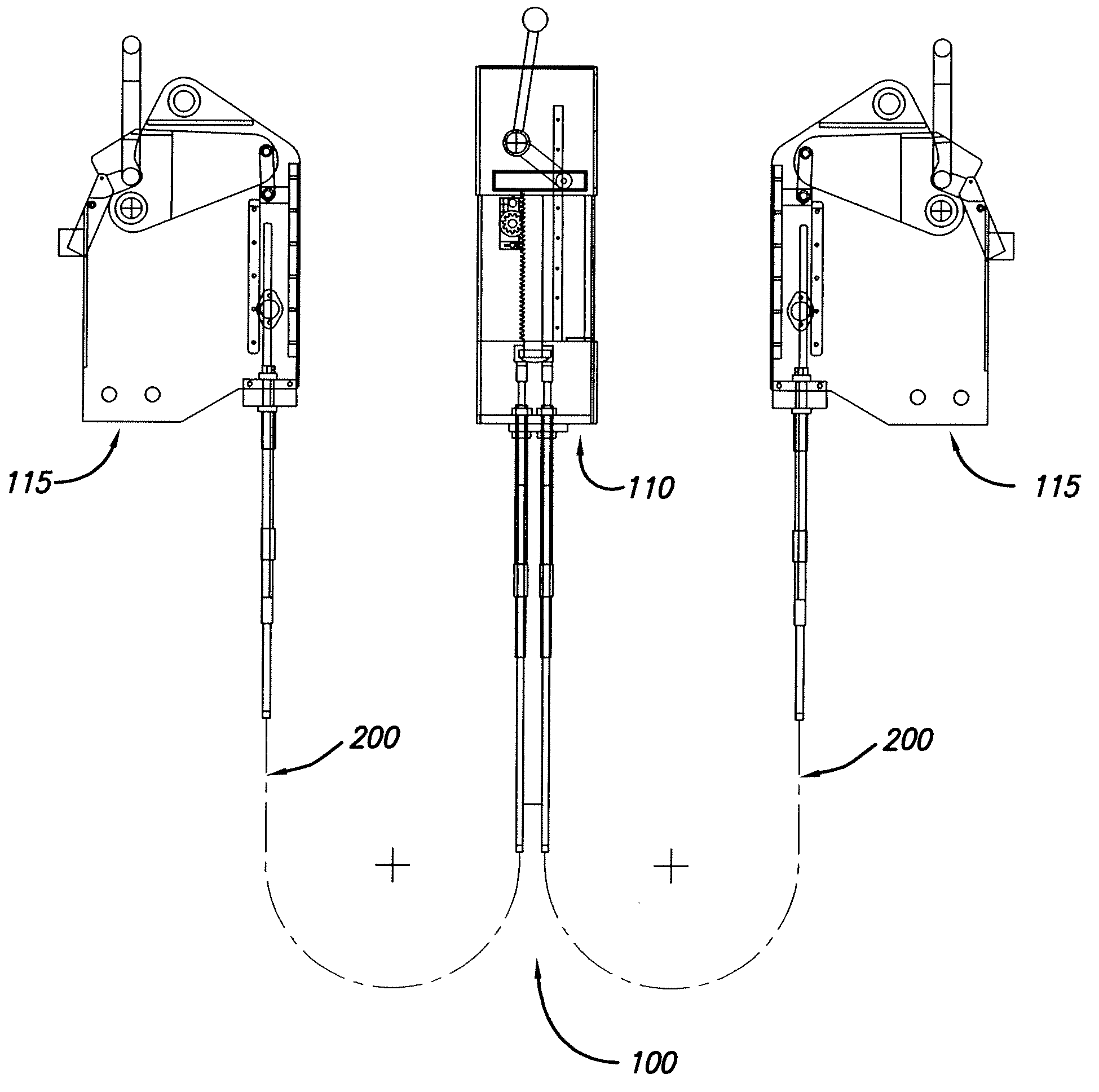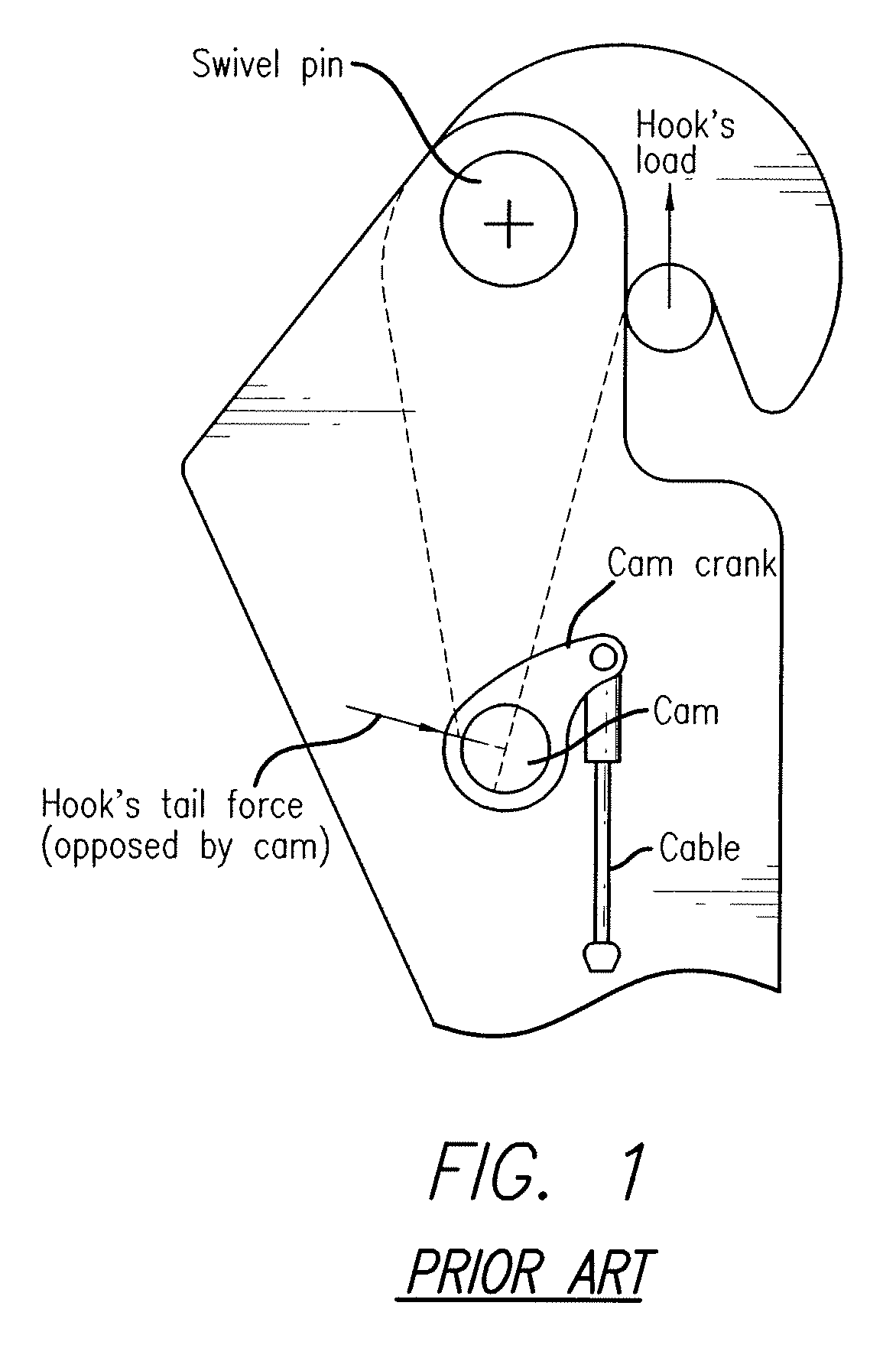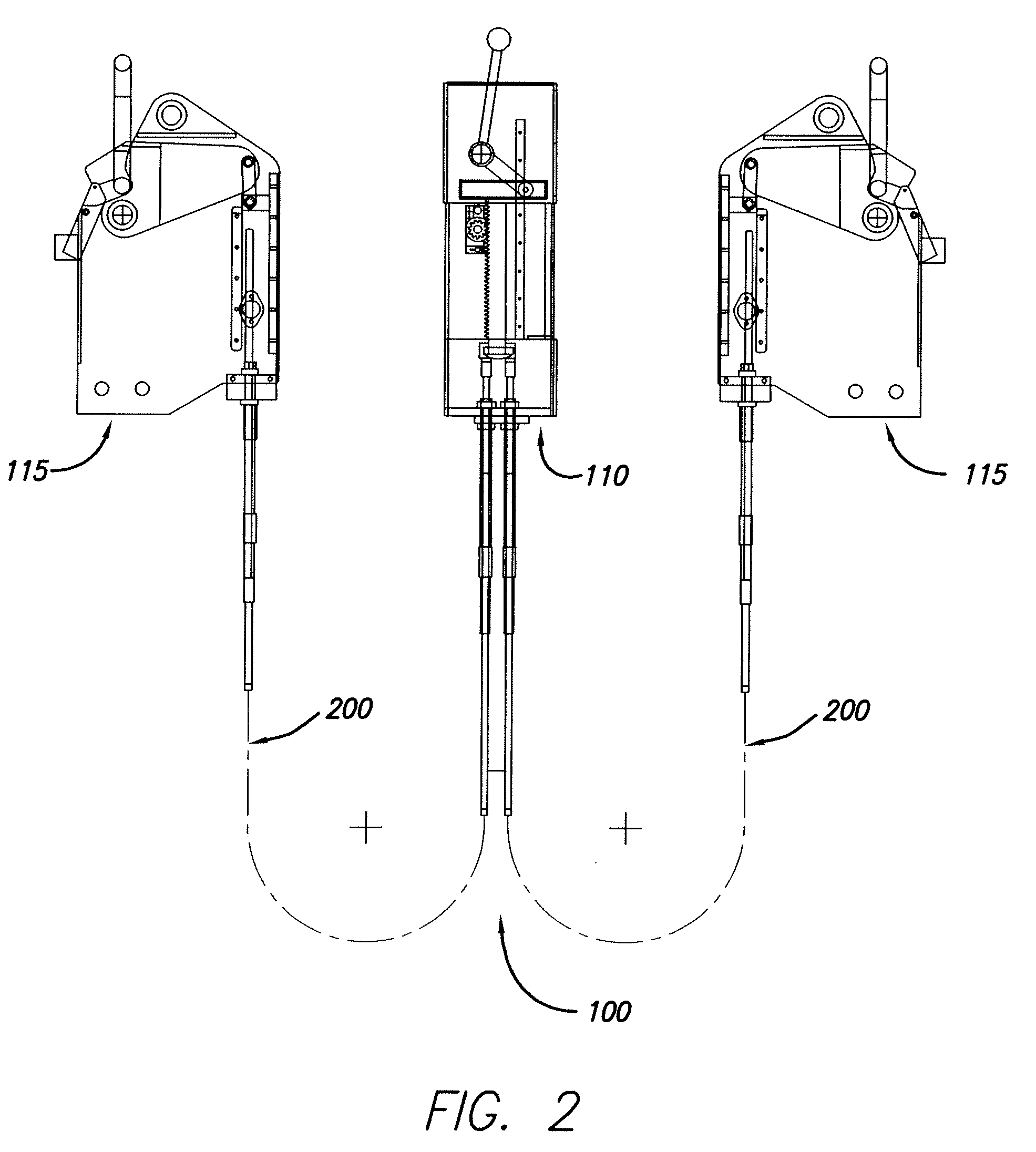Lifeboat disengagement system
a technology of lifeboats and disengagement systems, which is applied in special-purpose vessels, floating buildings, transportation and packaging, etc., can solve the problems of lack of confidence among mariners, difficulty in setting or releasing the hooks, and the task of becoming fraught with danger, so as to eliminate the need for a hydrostatic device
- Summary
- Abstract
- Description
- Claims
- Application Information
AI Technical Summary
Benefits of technology
Problems solved by technology
Method used
Image
Examples
Embodiment Construction
[0029]In the following paragraphs, the present invention will be described in detail by way of example with reference to the attached drawings. Throughout this description, the preferred embodiment and examples shown should be considered as exemplars, rather than as limitations on the present invention. As used herein, the “present invention” refers to any one of the embodiments of the invention described herein, and any equivalents. Furthermore, reference to various feature(s) of the “present invention” throughout this document does not mean that all claimed embodiments or methods must include the referenced feature(s).
[0030]The present invention is directed to a lifeboat disengagement system for supporting and releasing twin fall boats, wherein the disengagement system provides positive locking under load until the tension is removed from the falls and the release handle is pulled to disengage the pair of hooks simultaneously. Unlike conventional systems, the lifeboat disengagemen...
PUM
 Login to View More
Login to View More Abstract
Description
Claims
Application Information
 Login to View More
Login to View More - R&D
- Intellectual Property
- Life Sciences
- Materials
- Tech Scout
- Unparalleled Data Quality
- Higher Quality Content
- 60% Fewer Hallucinations
Browse by: Latest US Patents, China's latest patents, Technical Efficacy Thesaurus, Application Domain, Technology Topic, Popular Technical Reports.
© 2025 PatSnap. All rights reserved.Legal|Privacy policy|Modern Slavery Act Transparency Statement|Sitemap|About US| Contact US: help@patsnap.com



